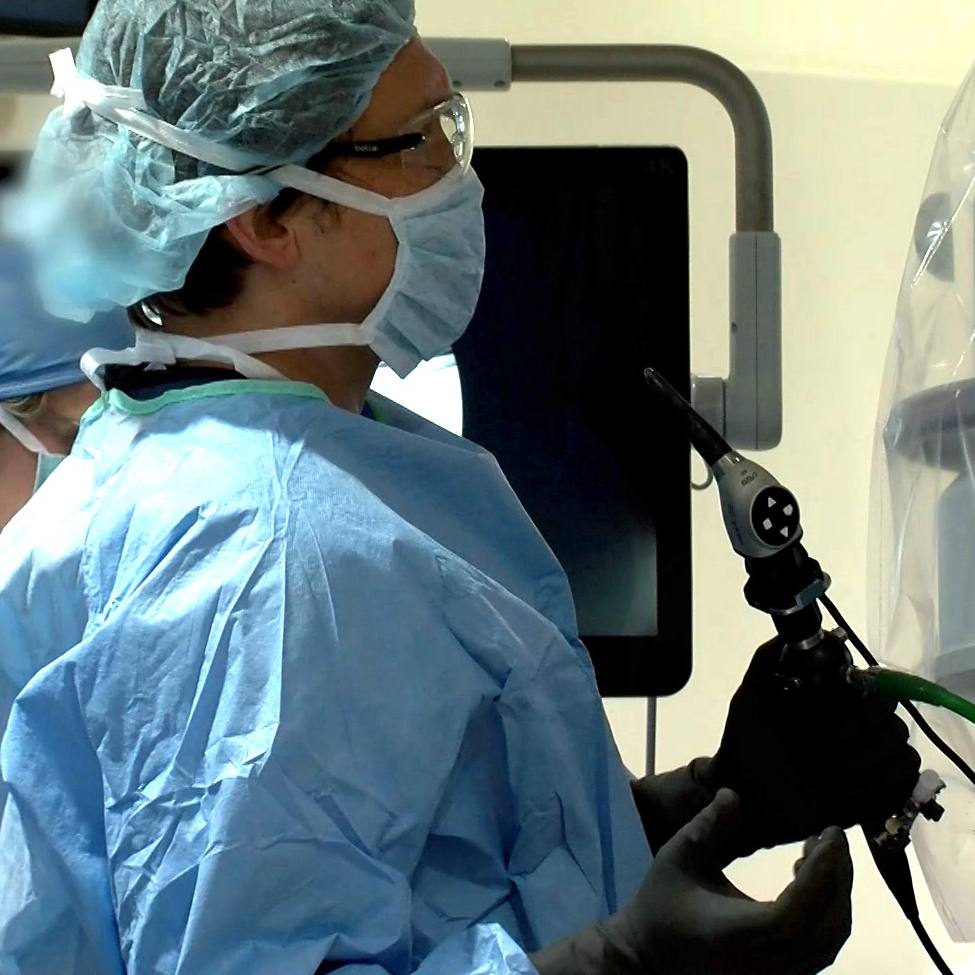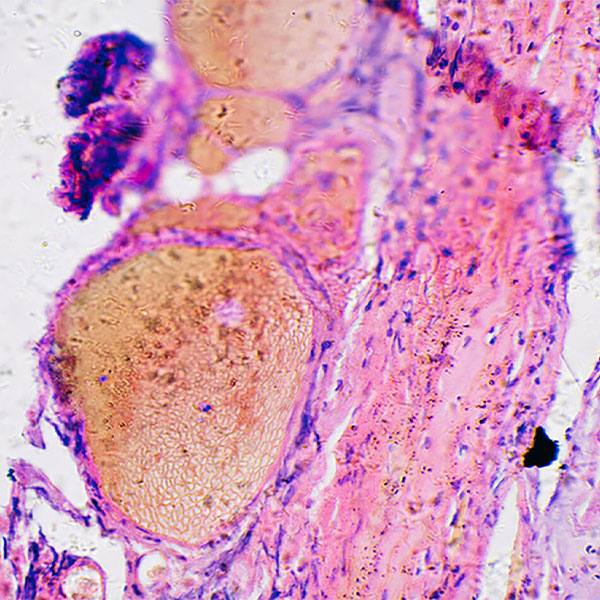-
Featured News
Sharing Mayo Clinic: Running Down a Mysterious Disorder
Determined to understand the reason for the strange hitch in his stride, marathon runner Pat Foley pushed forward for years until he reached the office of a Mayo Clinic movement neurologist.
An avid marathoner, Pat Foley saw running as a way of life. The 70-year-old Northfield, Minnesota, resident has logged more than 80,000 miles on foot so far. During his 50s and 60s, he did not miss a daily run for 18 years. But a decade ago, that way of life began to erode.
In 2009, Pat's gait took on a hitch so slight that even he didn't notice it right away. But over time, the hitch caused a series of falls that set him on a search for answers that lasted years. That search ended at Mayo Clinic in the Department of Neurology, where Pat received a diagnosis of repetitive exercise dystonia.
"For years, I'd be out running, and people would say, 'What's with your foot?'" Pat says, explaining that as a result of the condition, his right foot turns in and under when he takes a step. "And now I can finally say I know what it is, and it's a very rare neurological condition."
Although dystonia, a movement disorder characterized by involuntary muscle contraction, has limited treatment options and no cure, getting a diagnosis has given Pat understanding and peace of mind about his symptoms.
"I'm accepting of the fact that my running days are over, and I'm OK with that," Pat says. "I got 80,000 miles."
Bumps in the road
Dystonia, which affects about 3 million people worldwide, can have an impact on one area of the body (focal dystonia), multiple areas of the body that are next to one another (segmental dystonia), or all of the body (general dystonia). Symptoms related to focal dystonia can include rapidly blinking, sharply turning the head to the side, and forcefully closing and opening the jaw. Muscle spasms can be a result of dystonia, too. And some dystonia, such as writer's dystonia or musician's dystonia, occurs as a result of repeated activities.
Prior to the mid-2000s, medical literature made little mention of exercise-related dystonia. As a result, athletes who developed involuntary movements often were misdiagnosed, and some underwent unnecessary operations.
Pat's path to discovering the cause of his symptoms was riddled with misdiagnoses. Following his falls, Pat visited a sports medicine doctor in his hometown and was referred to a neurologist. Tests at that time resulted in a tentative diagnosis of multiple sclerosis and a referral to Mayo Clinic's Rochester campus for more testing.
Pat scheduled that appointment, but then a diagnosis and ensuing treatment of colon cancer sidelined his quest to understand his unexplained movements.
"After the surgery for the cancer, it seemed the running wasn't bothering me quite as much," says Pat, who has been cancer-free for eight years. "There was some speculation that the big tumor was pushing on a nerve and that was causing my problems."
"At some point, you're like, 'This is not working. Why am I doing this?'"
Pat Foley
Following cancer treatment, Pat continued running and training for races. In 2013 alone, he ran 1,400 miles.
In 2011 Pat, who retired as head coach in 2004, returned as a volunteer to coach the Northfield High School cross-country team. But the hitch in his gait worsened. Eventually his foot began twisting in when he walked as well as when he ran. Through the years, Pat sought help from five physical therapists, hoping that with enough targeted exercise, his body would begin behaving appropriately again. But the results weren't coming.
"At some point, you're like, 'This is not working. Why am I doing this?'" Pat says.
Pat, who loves spending time outdoors, began to grow frustrated about the mental and physical exertion required to walk and run normally.
"To a certain extent, I was like, well, I'm 70 years old, and I got a lot of running in. I could be in a lot worse situation. But at the same time, I was thinking, if I could just figure out the walking, I would be happier," Pat says. "Over the years, I'd think that if I'd end up where I can't run, my fallback was that I can walk."
Pat's hope was that if his problem could be identified, it could be treated. "I thought someone would find a magical solution," he says.
Chasing a diagnosis
In the summer of 2017, during a visit with an orthopedic surgeon in Northfield, the doctor asked Pat to walk down the hallway.
"He saw me walk and then asked me if I'd had a stroke," Pat says.
Pat, who’s never had a stroke, was baffled. But his physician gave him a sliver of hope. "He said, 'Go to Mayo. They like to solve problems.'"
Pat's first stop at Mayo Clinic was the Department of Physical Medicine, where he received a referral to Neurology. Under the direction of neurologist Allen Aksamit Jr., M.D., Pat underwent a number of exams to assess the root cause of his problem.
"In many ways, I was very happy when they came back and ruled out things that it wasn't," Pat says. "I didn't have a stroke, and I didn't have ALS and all the really bad things."
"Dr. Ahlskog had all of my records, and in the course of one visit he confirmed that it was repetitive exercise dystonia,"
Pat Foley
Early in 2018, as Pat was waiting to learn whether either myelopathy or a spinal cord compression could be the condition affecting him, he had a light bulb moment after reading a newspaper story about a woman with focal dystonia. "I read the article, and I was like, 'Oh my God! That's me!'"
In March, at the appointment where Pat learned that he didn't have myelopathy, he mentioned the newspaper article to Dr. Aksamit and remarked about the similarities between his symptoms and those of the woman featured in it. With Dr. Aksamit in agreement that Pat might be affected by a movement disorder, Pat received a referral to J. Eric Ahlskog, M.D., Ph.D., a Mayo Clinic movement neurologist.
"Dr. Ahlskog had all of my records, and in the course of one visit he confirmed that it was repetitive exercise dystonia," Pat says. "Some people call it runners' dystonia, and it is a type of focal dystonia."
Reward in the answers
Pat's condition affects individuals who perform the same activity repeatedly for a number of years. For instance, musicians' dystonia might affect a guitarist who plays frequently, and writers' dystonia affects individuals who spend a lot of time typing.
"My symptoms came on slowly," Pat says. "For some people, it's almost like overnight that they get it."
Although dystonia has no cure, strategies exist to counter its effects. Physical therapy and strength training help with muscle compensation. Injecting botulinum toxin, or Botox, can relax muscles and minimize contractions. Certain medications, such as diazepam and benzodiazepines, can inhibit nerves from transmitting signals to the brain and relax muscles. Sensory tricks, such as walking backward, also can ease symptoms.
"At my age, things happen, and I'm just glad that I didn't have this at a lot younger age."
Pat Foley
Pat says he will continue seeking physical therapy to strengthen the muscles that support a healthy gait. And he now seeks out other ways to enjoy the outdoors, such as bicycling and hiking. In May, Pat and his brother hiked the Superior Trail on the north shore of Lake Superior. It was a challenging fitness excursion that by the nature of its difficulty fostered more normal movement of his foot.
"Because it's not repetitive, I'm doing things differently with each step," Pat says. "The trail is real up and down. There are rocks and roots, but I would much rather hike on that than walk on a bike trail."
While Pat has mourned the loss of his running habit, he's now at peace with that change. He continues coaching high school long-distance runners. Now, instead of keeping pace with them on foot, he rides a bike alongside the team.
"Some people get this at 30 and 40, and they were looking toward a life of running. I see myself in a different situation. At my age, things happen, and I'm just glad that I didn't have this at a lot younger age," Pat says. "To be honest, even if I didn’t have this condition, I’d be riding my bike with those kids. They’re a bit faster than me."
HELPFUL LINKS
- Read more about dystonia.
- Check out the Department of Neurology.
- Explore Mayo Clinic.
- Request an appointment.








